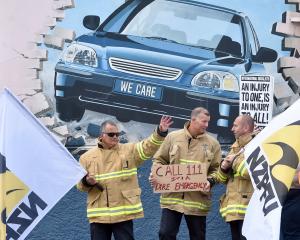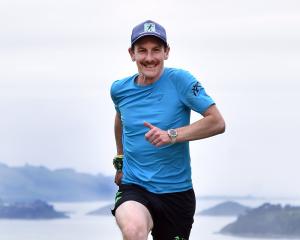
Richard Stephenson reckoned his frigid 1404km, 66-day expedition, skiing from the coast of the Antarctic to the geographic South Pole was pretty unpleasant, but it was nothing compared to having an itch that you just cannot scratch.
To do so in those conditions would mean certain frostbite.
"When you’re outside, you’ve got to be so careful. You can’t afford to have any skin exposed, you can’t take a glove off to touch something, you can’t scratch and itch or anything, because you’ll just get frostbite straight away."
Despite the ordeals, the Dunedin Hospital consultant emergency doctor and adventurer was delighted when he recently became the first New Zealander to make the unsupported marathon journey.
"It was pretty epic — an incredible experience, but also incredibly difficult."
He was joined on the trip by Australian medical doctor and friend from childhood, Gareth Andrews.
The duo’s journey was inspired by the tales of the great polar explorers Ernest Shackleton and Douglas Mawson, who formed an influential part of their adventurous upbringing.
From an early age, they had always aimed to one day follow their heroes South to the frozen continent, Dr Stephenson said.
The duo set off from the north coast of Berkner Island, on the shores of the Weddell Sea in mid-November, each towing a 165kg sled with all the supplies and equipment they would need for the expedition.
During the journey, they also carried equipment that collected climate and meteorological data, which was continuously beamed to the Landsat 8 satellite — something never before done.
It will now be studied by scientists around the world, and Dr Stephenson hoped it would give them crucial insights into the planet’s present climate and enable them to predict future climate behaviour — perhaps even help fight climate change.
He said howling winds, freezing temperatures and minimal visibility slowed their progress to 10km a day, and drifting snow made dragging their heavy sleds uphill almost impossible at times.

"It was really bizarre — a very strange feeling," Dr Stephenson said.
"We’d seen nothing that indicated there were any other humans on the planet for 65-and-a-half days, and then as you come towards the South Pole, you see glints of light reflecting off metal on the horizon, from all these scientific instruments like satellite dishes and telescopes.
"Then these buildings come out of the middle of nowhere and there’s people on Ski-Doos — it’s a really strange sensation coming back into civilisation.
He said talking to someone who was not Dr Andrews gave him a strange sensation.
Dr Stephenson said the proud moment brought tears to his eyes, which immediately froze solid on his cheeks.
He said it was a "triumph of mental and physical resilience and the spirit of adventure".
"It is undoubtedly one of the greatest achievements of our lives."
He said it was not their first polar expedition.
The duo have previously been to the magnetic North Pole, Greenland, Iceland and the Norwegian archipelago of Svalbard.
Together, in 2019, they completed a world-first unsupported traverse of Iceland.
They have also climbed many mountains around the world, including the Altai Shan (Mongolia), the Western Himalaya and the European Alps.
Dr Stephenson said the journeys had instilled a passion for the polar regions and a willingness to conserve these last "true wilderness areas" for future generations.













